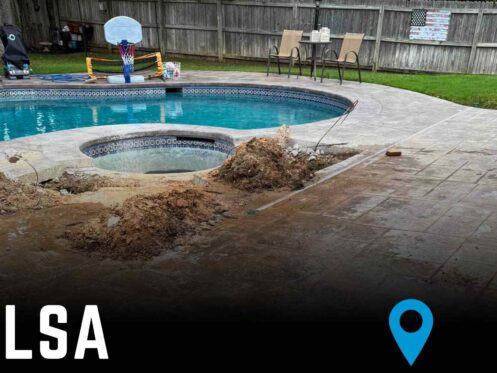Nothing disrupts a beautiful Tulsa landscape quite like a hidden irrigation line leak. Whether you’ve noticed unexplained wet spots in your yard, a sudden spike in your water bill, or complete system failure, underground irrigation problems can quickly escalate from minor inconveniences to major headaches. These hidden leaks not only waste precious water but can also damage your property’s foundation, sidewalks, and carefully maintained landscaping.
When irrigation lines break beneath concrete walkways or deep underground, homeowners often feel overwhelmed by the complexity of the repair process. The good news is that professional irrigation repair specialists in Tulsa have the expertise and equipment to efficiently diagnose, access, and repair even the most challenging irrigation line problems. From initial leak investigation to complete pipe replacement, experienced technicians can restore your system to optimal working condition while minimizing disruption to your property.
Understanding the professional repair process can help Tulsa homeowners make informed decisions when faced with irrigation emergencies and ensure they choose qualified contractors who deliver lasting solutions.
Identifying Hidden Irrigation Line Leaks in Tulsa Properties
Hidden irrigation leaks can be particularly challenging to detect in Tulsa’s diverse soil conditions, from the red clay common in many neighborhoods to the sandy loam found throughout the metro area. Professional leak detection goes far beyond simply looking for obvious water pooling on the surface. Experienced irrigation repair technicians use specialized equipment including electronic leak detectors, pressure testing devices, and thermal imaging to pinpoint the exact location of underground breaks.
Early detection of irrigation line leaks is crucial for Tulsa property owners, as Oklahoma’s clay-heavy soil can shift and expand when oversaturated, potentially causing foundation issues or damaging hardscaping. What starts as a small pinhole leak can quickly worsen due to water pressure and soil erosion, leading to complete pipe failure and more extensive repair needs. Professional investigation techniques allow technicians to locate problems before they escalate into major system failures.
Common Causes of Irrigation Line Damage in Tulsa
Tulsa’s unique climate and soil conditions create specific challenges for irrigation systems that homeowners should understand. The area’s expansive clay soil is notorious for shifting during wet and dry cycles, putting stress on buried pipes and fittings. During Oklahoma’s intense summer heat, soil contraction can cause pipes to shift or crack, while the freeze-thaw cycles of winter can lead to pipe bursts in lines that weren’t properly winterized.
Tree root infiltration is another common culprit in Tulsa irrigation line damage, as the region’s abundant oak, maple, and elm trees send roots searching for water sources. Additionally, many older Tulsa neighborhoods have aging irrigation systems installed decades ago with materials that may no longer meet current standards, making them more susceptible to failure and leaks.
Professional Irrigation Line Repair Process
When irrigation line problems strike, professional technicians in Tulsa follow a systematic approach to ensure complete and lasting repairs. The process begins with thorough leak investigation and assessment, using advanced detection equipment to map the exact location and extent of the damage. This preliminary work is essential for determining whether the issue requires a simple fitting replacement or more extensive pipe renovation, helping property owners understand the scope and cost of necessary repairs.
Once the problem areas are identified, technicians carefully plan the excavation strategy to minimize disruption to existing landscaping and hardscaping. In cases where irrigation lines run beneath sidewalks, driveways, or patios, specialized concrete cutting equipment may be required to access the damaged pipes. Professional crews use precision cutting tools to create clean, minimal openings that can be properly restored after repairs are completed.
The actual repair work involves completely removing all damaged pipe sections and installing new fittings and connections using current industry standards. Quality irrigation repair requires proper pipe joining techniques, appropriate fitting selection, and careful attention to system pressure requirements. After installation, technicians conduct comprehensive pressure testing to verify that all connections are secure and the system operates at optimal efficiency with no leaks.
When Sidewalk Cutting Is Necessary for Irrigation Repair
Sometimes irrigation lines run directly beneath concrete walkways, requiring professional concrete cutting to access broken pipes. This scenario is common in established Tulsa neighborhoods where sidewalks were installed after irrigation systems, or where pipes were routed under walkways for aesthetic or practical reasons. Professional irrigation repair companies have specialized concrete cutting tools that create precise openings while minimizing damage to surrounding areas.
The key to successful sidewalk cutting for irrigation access lies in careful planning and proper restoration techniques. Experienced technicians mark the exact location of the damaged pipe before cutting, ensuring minimal concrete removal while providing adequate working space. After completing the irrigation repairs, professional crews can coordinate concrete restoration or provide detailed specifications for matching the existing walkway appearance and structural integrity.

